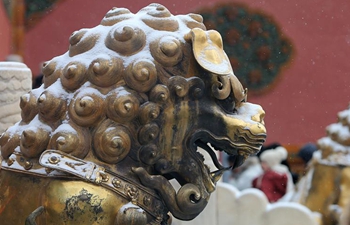NANJING, Feb. 19 (Xinhua) -- An international team recently reported two new species of the extant family Clambidae of polyphagan beetles from mid-Cretaceous Burmese amber, offering important evolutionary and biogeographic implications.
Led by Cai Chenyang, a researcher with the Nanjing Institute of Geology and Palaeontology of the Chinese Academy of Sciences (CAS), the team discovered five well-preserved fossils representing the two new species, Acalyptomerus thayerae and Sphaerothorax uenoi.
Both species are extremely close to their living counterparts in morphological terms and belong to extant genera of Clambidae.
Acalyptomerus thayerae (about 1.05-1.15 mm long) has a close affinity to A. herbertfranzi, a species found in Central America and northern South America, while Sphaerothorax uenoi (0.71 mm long) is closely related to the extant species of Sphaerothorax which are usually collected in forests of Nothofagus in Australia, Chile, and New Zealand.
Beetles are the most species-rich group of animals on our planet, exhibiting extraordinary morphological disparity and ecological diversity.
"The long-time moist environment of ancient forests may be a probable cause of the stagnation during evolutionary history," Cai said.
The research findings were published on the scientific journal Proceedings of the Royal Society B in January.

















